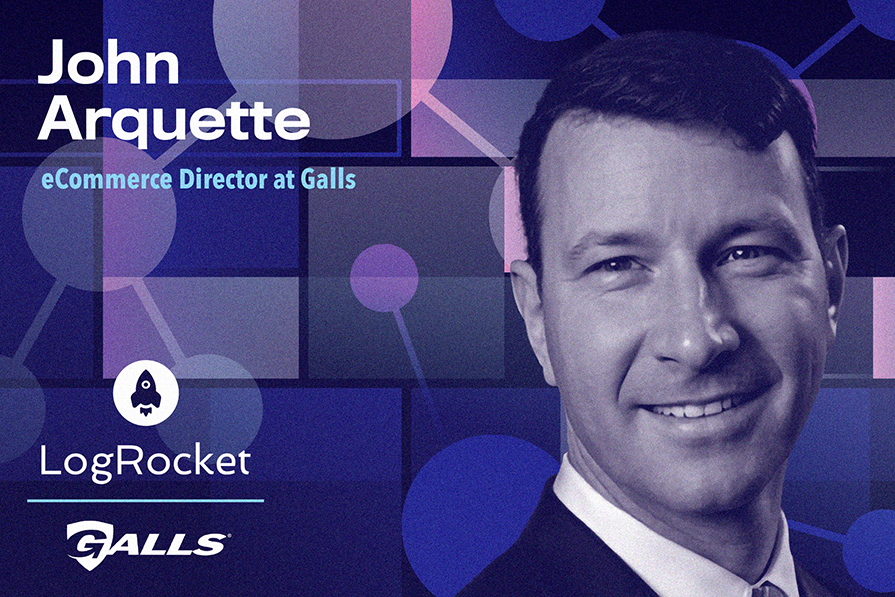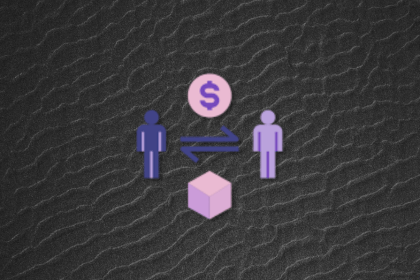John Arquette is Ecommerce Director at Galls, a supplier of footwear, clothing, and equipment to public safety and military professionals in the US. He started his career in the Marine Corps before working at Delphine, a wholesale stationery company, which he helped transition into a national DTC ecommerce brand. John then joined Palmetto Moon, a Southern lifestyle retailer, as an ecommerce manager before transitioning to Maxwood Furniture. Before his current role at Galls, he served in various ecommerce and leadership roles at Vapor Apparel, Trevco, and mDesign.

In our conversation, John shares his experience working in the early days of ecommerce and how it’s drastically transitioned over time. He talks about learnings he’s taken with him from his experience in the Marine Corps, as well as how he’s had to pivot to new best practices in the industry.
When I graduated from college, Amazon.com had not yet launched as a website. There was no such thing as ecommerce, so this was not part of my career plan. With that, I came into ecommerce pretty organically. Before I got started in this space, I was running my own company, which was a wholesaler for wedding invitations and stationery. We had a one-page website at the time, and I noticed that if I put information on that page, we stopped getting phone calls and emails asking about those topics. That’s when I started leaning into the idea of pre-answering questions for customers on the sites.
Then, customers started coming directly to us instead of shopping at retailers for these products, and it was obvious to me that if we serviced a customer directly, we got double the revenue and triple the margins on orders like that. I quickly developed a plan to make our wedding invitations available to customers right online. The financials and customer service aspect of it made it very obvious that we should be servicing customers directly on the sites.
The inflection points all have to do with platforms, launching sites, developing features, and using ecommerce as a business channel to acquire and service customers well. On the other side of that coin, I’ve lived through a few of the big business disruptions, like the dot-com boom and subsequent crash.
I was running a business during the Great Recession of 2008, and I had to change my entire set of strategies to launch products, advertise, and service my customers. A huge source of the funding for the products I was selling at that time — expensive wedding invitations — was driven by home equity, which disappeared during the crash. It was a unique experience working on products directly tied to consumers’ socioeconomic health.
It’s hard to remember sometimes, but it’s even harder to express to people who have always enjoyed access to SaaS platforms like Shopify. Back in the day, we had to conceive of every feature we wanted on our website. We had to draft requirements and find hardcore design dev teams to build them for us. There weren’t as many of those services around, and they were very expensive. We had to pitch the site and project to development teams, and doing anything on a site, like launching a new feature, editing products, or changing the navigation, took significantly longer than it does today.
Now, we can log into Shopify and create a landing page in minutes. Of course, some companies still run on custom systems, but back in the day, every single one of those changes we made as an ecommerce user was an IT project. We spent most of our time planning and managing IT projects just to update content and pages, and build out mechanisms that we do without thinking today.
If we were really nimble back in the day, a dev team could work all night to get us something potentially ready in the morning. Now, it’s much more agile. Of course, the standards are higher now, too, which is an interesting effect from this change. The landscape is almost unrecognizable.
Of course, it changes with the roles and companies. Back in the day, we used to talk about website traffic in terms of hits — they weren’t sessions or visits. The point was all about how much gross revenue we were generating. There was a time when no one even discussed the profitability of an ecommerce concern. Over time, people realized that we do have to be concerned about free cash flow and EBITDA if we’re running an ecommerce business. We have to worry about how much money we’re investing in the company and what margins we’re pulling.
Back then, a lot of the variable costs that scaled with sales didn’t exist. Advertising budgets back in the day were fixed, like print advertising, TV ads, billboards, and more. There was not the same need to pull focus on things like contribution margins. As someone moves up in their role, they become less concerned about hitting a sales number and more concerned with how to allocate capital, resources, cash, etc. It’s a natural progression to start looking at broader KPIs and how they’re doing across multiple parts of the business.
I might be slightly different than the typical ecommerce executive or leader. My ecommerce career started when I owned the company, so I had to learn to do everything and then hire people. I’d teach them and scale from there. I had the burden/benefit of having to do, literally, everything in ecommerce at some point.
I was fortunate that I worked at companies where I could expand into multi-channel ecommerce, marketplaces, D2C, and B2B. I have run multiple D2C sites, B2B sites, and many marketplaces that have different pros and cons, like Amazon, Walmart, Wayfair, Target, etc. I was forced to learn and participate in these things because they were new and became available, and then I’d test how well they would work.
Generally, back when ecommerce was first starting as a profession, there were fewer of us. Nowadays, there are millions of people who work in ecommerce as directors, managers, and more. That wasn’t quite the case a decade ago, so it was easier to keep a finger on the pulse of what our peers were saying or doing.
The hardest transitions have been with new platforms and, therefore, hidden algorithms that underlie the tools that I have to rely on. In earlier years, we were better able to stay abreast of things that were changing and that were going to be impactful on the business. With things like Google and SEO tactics, we could fully understand how it worked and rank our sites versus our competitors’.
In the past, we could follow all the touchpoints in our user’s path. It was much easier. Now, getting a handle on attribution is a lot harder than it used to be. We used to think about the future in terms of how much better everything was going to get as far as reporting, tracking, and attribution. It feels like the opposite, because there’s more data but less insight into the “why.”
With that, we need to make an absolute connection between data inputs and the insights we’re drawing from data sources. We need to make a working hypothesis of how, why, and when our customers use our platforms, what their sessions look like, and their carts and purchases.
Some time ago, I was selling high-quality, expensive kids furniture — huge bunk bed sets, loft bed sets, slides, play beds, and more. They were very expensive and therefore had a long sales cycle. Parents research these things. When I looked at my analytics data, it said that half my sales are taking place on weekday mornings, and that it was the customer’s first visit to the site. They visited two pages, were on the site for 60 seconds, and bought a $4,000 item. Impossible, right?
We knew from talking to customers that the parents looked at these sites on their phone, iPad, or work computer over many weeks or months. They discussed it over the weekend, waited for payday, and on a work morning, they went to the office and purchased it on the website. If I had just looked at the analytics data, I would have had no idea about that process. Our customer service teams talked to customers frequently over the phone or via email. And if I hadn’t gotten those insights from our CS teams and just relied on that data, I would’ve taken drastic action to stop advertising on multiple platforms.
This is why the connection with the customer and a working hypothesis on what they want is critical.
I use a technique that goes all the way back to my military days. I was an officer in the Marine Corps, and there are some of these leadership principles we followed:
One of the principles is keeping your Marines informed about what you’re doing and why you’re
taking action. This applies heavily to my work now as well.
Part of conducting military operations is also making sure that your troops know the commander’s intent. That way, if something goes wrong while you’re executing the plan or the operation, they can take action without having to stop and ask what to do next.
If they understand what we’re trying to do in the intermediate and long-term, it helps them out in several ways. They feel empowered to make more tactical decisions without stopping and asking for clarification. They feel good about their decisions, even if they don’t work right away. In my experience, this is why if you keep the teams informed about why you’re doing things, it gives them a lot of confidence and flexibility.
The other principle that I have taken from my time in the Marine Corps is a concept called centralized command but decentralized control. You hire people because they know what they’re doing or can quickly improve their skill sets. When you allow them to execute, bring ideas, test things, and make changes, it grows their confidence. Some of the best suggestions have come up from my team, and part of the reason is that I have allowed them room to maneuver to do their job.
There are a lot of good guidelines to take away from how the military operates, and these are very applicable to a business environment, especially when you’re leading teams of different people. Keep them informed, let them do their job, and great things will happen.
LogRocket identifies friction points in the user experience so you can make informed decisions about product and design changes that must happen to hit your goals.
With LogRocket, you can understand the scope of the issues affecting your product and prioritize the changes that need to be made. LogRocket simplifies workflows by allowing Engineering, Product, UX, and Design teams to work from the same data as you, eliminating any confusion about what needs to be done.
Get your teams on the same page — try LogRocket today.
Want to get sent new PM Leadership Spotlights when they come out?

Discovery isn’t always worth it. Learn when to skip the research, trust your gut, and ship fast without slowing down your product team.

Mike Fantigrassi shares his experience helping transition NASM to a product-led growth model and the challenges that came with it.

Rob Helton talks about the potential for technology to impact the bottom line across the healthcare industry.

Learn how to use AI for faster, smarter customer discovery—without losing the human insight that makes product work effective.